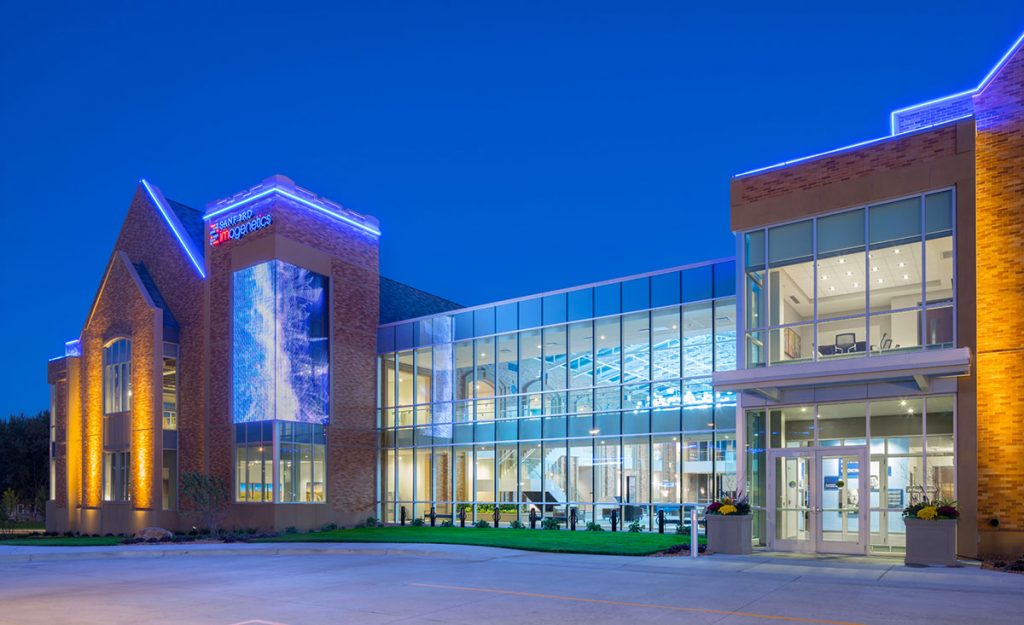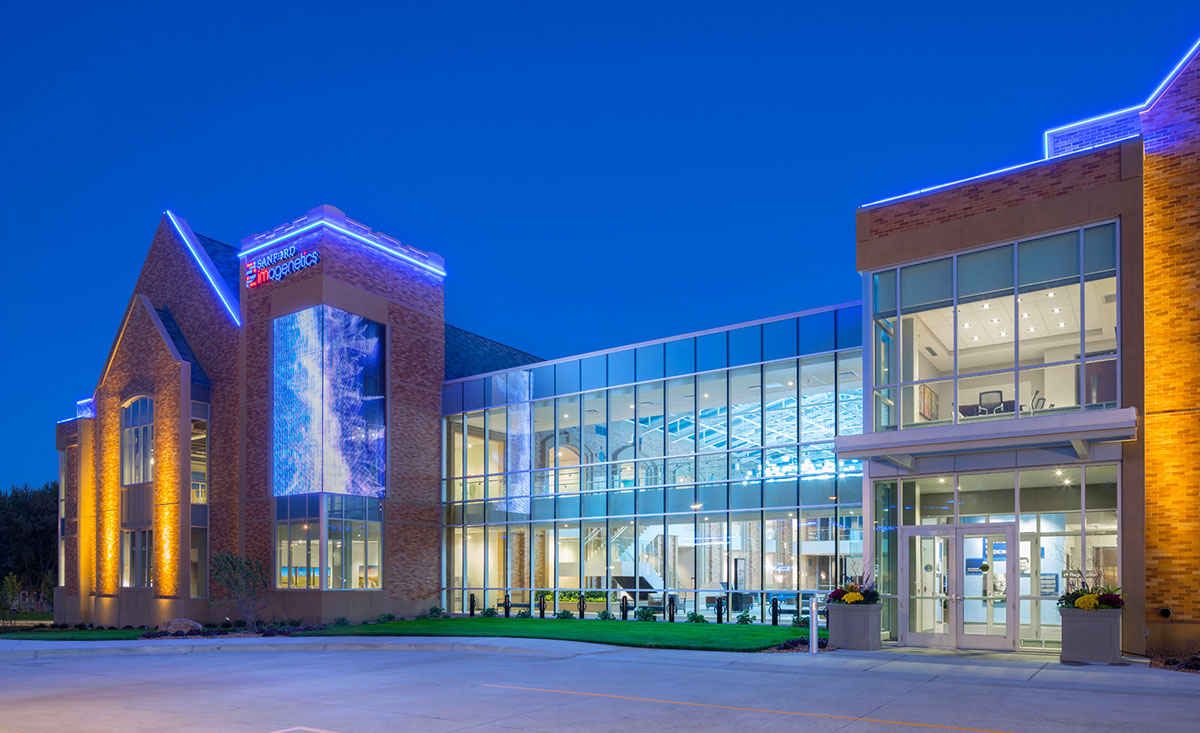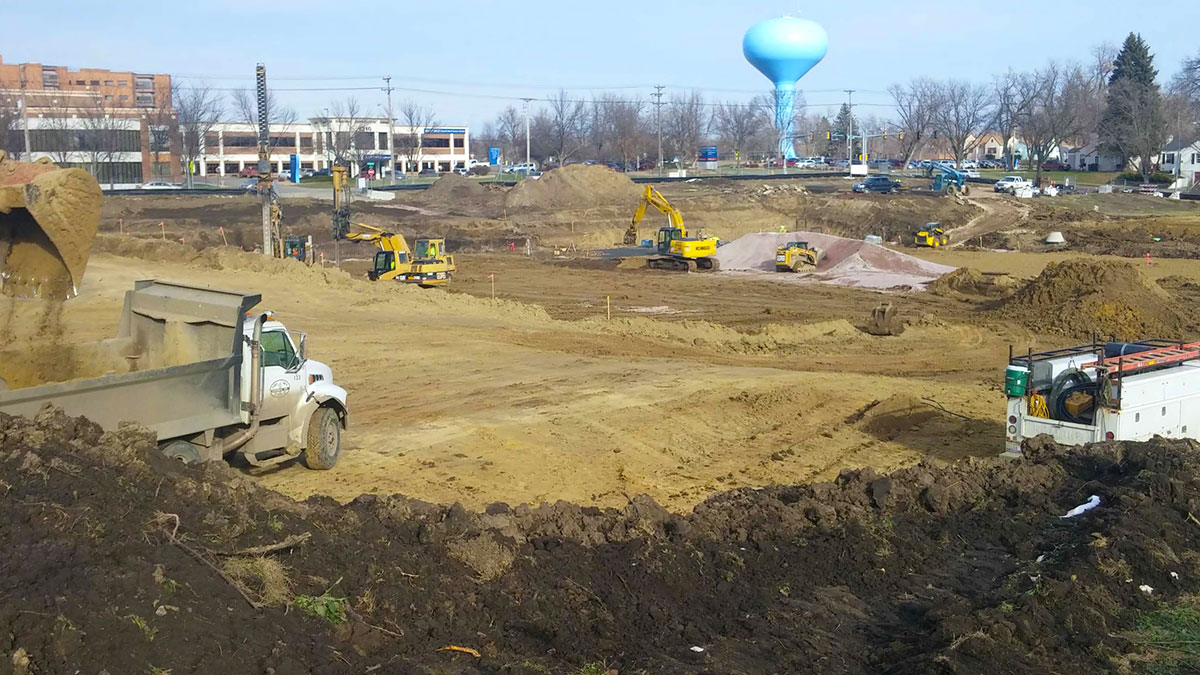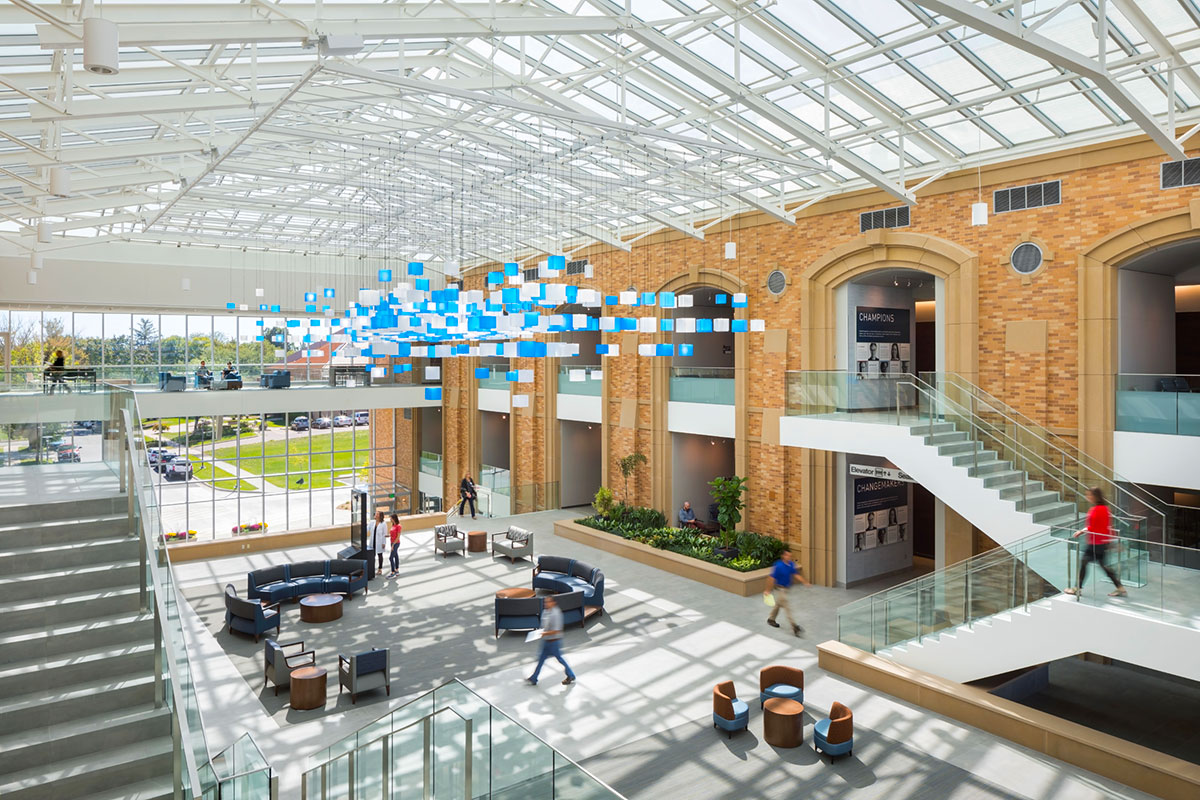Deep Foundation Alternative for South Dakota Medical Project


Jeff Christensen, P.E., Senior Engineer with Ground Improvement Engineering in South Dakota, shares a project example on the Sanford Health campus in Sioux Falls, featuring the Geopier X1® replacement Rammed Aggregate Pier® system.
The Sanford Imagenetics facility was completed and opened successfully in 2017, a three-story medical building plus one below grade walk-out. This project is a great example of how ground improvement technology has evolved over the last few years to provide cost-effective solutions to avoid deep foundations.
 Medical buildings typically have high load requirements. When you marry that with poor soils, the fun begins. The Sanford campus geology is primarily undocumented existing fill overlying soft lean clay and sandy soils (loess and alluvium) followed by stiff to very stiff lean/fat clay.
Medical buildings typically have high load requirements. When you marry that with poor soils, the fun begins. The Sanford campus geology is primarily undocumented existing fill overlying soft lean clay and sandy soils (loess and alluvium) followed by stiff to very stiff lean/fat clay.
During the preliminary pricing phase in 2015, the general contractor reached out to us about cost-effective alternatives to costly deep driven piles. Having worked for this contractor previously and on projects for Sanford Health, we understood the soil conditions and the potential alternatives.
One of the unique features and challenges of this project is that the lower level extends deep within the hillside; the interior “rear” wall acts as a retaining wall resisting high-earth pressures. We needed to control settlements for the resulting wide footing while maintaining an attractive price solution.
These considerations pointed to the Geopier X1 replacement Rammed Aggregate Pier (RAP) system as the alternative to a driven pile solution. With X1 we can install very stiff rammed aggregate elements up to 40 feet below grade. For the Sanford Imagenetics project, our installer built X1 elements up to 30 feet below the foundations.
After excavation to the subgrade elevation, the X1 construction began in earnest. The process involves drilling a cavity and lowering a mandrel with a patented internal compaction mechanism into each cavity. Crushed aggregate is placed into the cavity from above and that material flows into and through the compaction chamber. The mandrel is lifted vertically and then driven down to form compacted lifts. Each layer is vertically rammed and compacted until each RAP element is fully constructed to project specifications.
The Geopier ground improvement was designed to provide differential settlement control and increased bearing pressure for conventional footing support.
 Installing hundreds of elements in a few weeks, this solution saved the project hundreds of thousands of dollars in deep pile foundation costs and several days in the schedule.
Installing hundreds of elements in a few weeks, this solution saved the project hundreds of thousands of dollars in deep pile foundation costs and several days in the schedule.
Patients and staff who enter the Sanford Imagenetics building probably don’t think about the foundation of this facility, and they really don’t have to give it a thought. With the help of improved technologies in our field, Sanford Health redeveloped an older portion of their campus for the future.
See other examples of medical projects using Geopier RAP elements.
